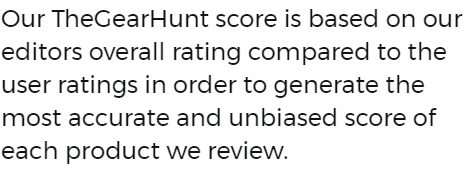Rock Climbing is a highly individualized sport in which you decide your own level of involvement. There is a wide spectrum you can enjoy from casual weekend excursions at the gym to some serious daily training. The sport is easy enough to get into for beginners and hard enough to remain difficult for seasoned professionals. The skill cap is infinite because harder climbing routes are always being created. Climbing is a sport you grow into as your body adapts to the challenges of vertical terrain.
At first, the sport may not seem as creative as it truly is because nothing is actually produced--there is no end product to be carried away with the experience. But climbers are always working to visualize new climbing routes or plan them out while free climbing. There is no real “right” way to go about it, so it’s an activity you can customize and really make into your own.
This review is centered on Evolv’s Defy--a neutral indoor climbing shoe. Since most gyms require you to have/rent climbing shoes to avoid injury, you’ll need to grab a pair if you want to get into the sport. If you are new to climbing or are just looking for another pair for longer, more laid back sessions, the Defys are a solid choice. They are comfortable enough for longer periods of wear and perform well on most areas of a climb. They are also highly inexpensive, so you don’t have to make the mistake of spending a fortune on some high-tech shoe you might only wear for a week. As a starting shoe, the only real cons are the shoes poor edging ability and their tendency to retain insole moisture.
Outsole & Midsole
The outsole and midsole stretch undivided across the entire length of the foot. This does two things: 1) It provides some comfort and stability you won’t get with a more aggressive build and, 2) impedes the overall precision over smaller footholds. A neutral shoe also interferes with your ability to bend your toes down and forward for extra leverage on
overhangs/boulders.
As for materials, this shoe has a 1.4 millimeter midsole and a 4.2 millimeter outsole. Due to Evolv’s Molded VTR technology, the thickness of the rubber remains constant, but its density changes depending on the section of the shoe. For areas that require heavy wear such as the toe box, Evolv uses a higher density rubber to increase protection and durability. For low impact areas that require more sensitivity and comfort, a lower density rubber is used.
Insole
The insole has a nylon liner--what Evolv refers to as their Agion mesh. The liner has been treated with an antimicrobial compound to help ward off any bacteria that accumulates from internal moisture. Unfortunately, despite any
microbial treatment, many users still complained about the smell of the shoe after any extended period of use. Users report that the nylon liner is at least partly responsible for the smell because it retains moisture. In other words, the shoes don’t dry out well on their own. One way to remedy this problem is by
drying out the shoes directly after use by a vent, a fan, or even with a hair dryer.
Sensitivity
Typically, the softer the materials of a climbing shoe are, the more details of the terrain you are able to feel through the sole. Rock climbers refer to this feature as the shoes “sensitivity”. Sensitivity, however, is a double edged sword. On the one hand, a sensitive shoe allows you to have a better sense of exactly where your foot sits on a hold. A softer sole is also usually better when it comes to smearing. On the other hand, the more sensitive or soft a shoe is, the less protection it provides and the less stable it remains under pressure. So, you may be able to better sense that your big toe is starting to slip off an edge, but you’ll also be keenly aware of the next hold if you happen to slam your foot into it. With great sensitivity comes great vulnerability.
Edging
For those of us new to climbing and are still getting used to the lingo, Edging is when you position part of your foot along some narrow edge of a surface. Edges are typically too narrow to hold the entire length or width of your foot, so part of your foot hangs suspended in the air. This shoe lacks stability when edging because of its soft materials. Some of the higher performance climbers out there are able to manage the difficult feat of being simultaneously sensitive and firm by having a
aggressively curved outsole, but typically this results in less comfort for the user. As a beginner, you’ll want a shoe that you can wear comfortably as you focus on mastering the basics.
Toe/Heel Hooking
We promise that toe hooking is not as crazy as it sounds. Toe or heel hooking is simply when a climber uses part of his/her foot to hold them in place or help transition them to a different position. Some shoes are better at this than others. Aggressive builds like the Evolv Shaman have a more angular design which lends itself easily to weight-bearing hook holds. Consequently, these shoes tend to perform best on short distance overhanging terrain. Shoes with flat but soft soles like this one are good at
hooking due to their flexibility. When it came to user accounts of performance in the area of toe/heel hooking, people were generally pleased.
Asymmetric Design
As opposed to a casual shoe that more or less looks the same bilaterally, climbing shoes will usually have an asymmetrical design. The goal of a climbing shoe is to perfect the natural talents of the human foot by molding to its shape as closely as possible. The human foot is already great for climbing, so a climbing shoe simply tries to support an already well-adapted shape by offering additional protection and stability. The diagonal point of your toes allows you to insert them into what climbers call “pockets” or holes within or around a foothold. With that being said, these shoes have a more rounded toe box which isn’t great for pocketing. You will have some trouble getting a comfortable enough amount of your toes securely into a narrow pocket.
Smearing
Smearing is your shoes ability to cling to a wall through surface area and friction. Your foot is much better at smearing without the aid of footwear due to the elasticity and perspiration from your skin. Similarly, a climbing shoes ability to smear depends upon their softness and sticking capability. These shoes meet both of these criteria. The soft and sensitive outsole may become an issue for edging, but when it comes to smearing it excels.
Fit & Sizing
Let’s first get the nuts and bolts out of the way. These shoes are offered in a US mens 5 through 13 (half-sizes included) and sizes 14 through 16 (no half sizes included). There is an identical women’s version of this shoe called the Evolv Elektra. They are pretty much the same in every way. The Evolv website also offers split sizing for an extra 30 dollars.
Now, sizing is very important when it comes to climbing shoes. Many buyers complained that the shoes fit to snuggly, but that is the point of a climbing shoe. They should be as skin tight as possible without causing any pain. With some shoes you can buy them a size or so down and the fabric with expand to the length of your foot. Not so with these. The material composition of these allows only for lateral stretching, so if you buy these a size too small you’ll need to return them. Climbers recommend buying these at your normal shoe size. While the shoes aren't very malleable length-wise, they do stretch laterally into an already wide toe box. For performance shoes like these, we always recommend trying before buying or at least buying from somewhere with a fair return policy.
Terrain
As far as terrain is concerned, you can expect an all around decent performance out of the Defys. They have a neutral design which makes them a great option for longer, more straightforward climbs. Due to the soft flexibility of their sole, they also work well on boulders or other complex overhanging routes which take a long time to get through. You won’t have to constantly take them off between climbing attempts like you do with some aggressive performance builds. The only things you’ll want to avoid are routes that require a lot edging and/or pocketing.
Closure System
The shoes utilize a 2-strap Velcro system. The
shoe straps lock in opposing directions to help hold the upper down equally on both sides. Each strap is positioned away from the toe box which helps to avoid snagging or catching against holds. However, by placing the straps far away from the toe box, there is less lock down in this area. The shoes tongue is split in two and folds over upon itself for extra cushioning against the pressure of the straps. Unlike some shoes with velcro that stops sticking after a few months of use, the velcro material on the Defys has been reported to stand the test of time.
Weight
The shoe weighs 8.5oz in a mens size 9 making them very lightweight. Weight is important with every type of sports gear for varying reasons. When it comes to climbing, the reasoning is rather obvious. The more weight you take up vertically with you, the more weight you need to brace yourself to hold. More weight equals more strain on your body over time. But just because a shoe weighs slightly more than another doesn't necessarily make it a better choice. There may be some sound structural benefits to a slightly heavier shoe that offsets a lighter build.
Price
These shoes go for 89 dollars retail which is a great price for a climbing shoe. As a beginner, you don’t want some overly technical 200 dollar shoe with short lasting comfort. Why? Well, for one, if you are new to the sport you might end up not liking it or you might end up not having the time for it anymore. Secondly, you want a comfortable shoe to learn the sport with not a technical one that offers great performance but makes you feel like you’re wearing foot bindings.
Comfort
When it comes to rock climbing, comfort will help greatly with the endurance you’ll want to build up as a beginner. Shoes that provide both advanced performance and comfort can cost you well over 150 dollars which is very expensive while you’re still testing the waters. Luckily, these shoes won’t break your wallet or your feet. Moreover, because they lack a knuckle box, these shoes feel more like a slipper than a hooked climbing shoe offering a smooth transition out of casual designs. Their undivided outsole, soft midsole, and split tongue all help to make your first
climbing experience one that is filled with excitement rather than with pain and misery.
Key Features
Split tongue - Overlaps onto itself to reduce unwanted pressure,
Molded VTR - For a sensitive and durable climbing experience
Antimicrobial Lining - That keep bacteria from accumulating on the insole
TRAX SAS - Provides a durable and sticky outsole
Undivided Midsole / Outsole - For long lasting comfort on feet
Final Thoughts
For your first pair of climbers, the Defy hits all the right check marks: comfort, affordability, and decent all around performance. Comparatively, you’d be hard pressed to find a superior beginners shoe in the 90 dollar price range. While not a high-level performance shoe, the defy remains a good choice for intermediate climbers who are looking for a more comfortable option to wear when they are not trying to max out their performance.
















